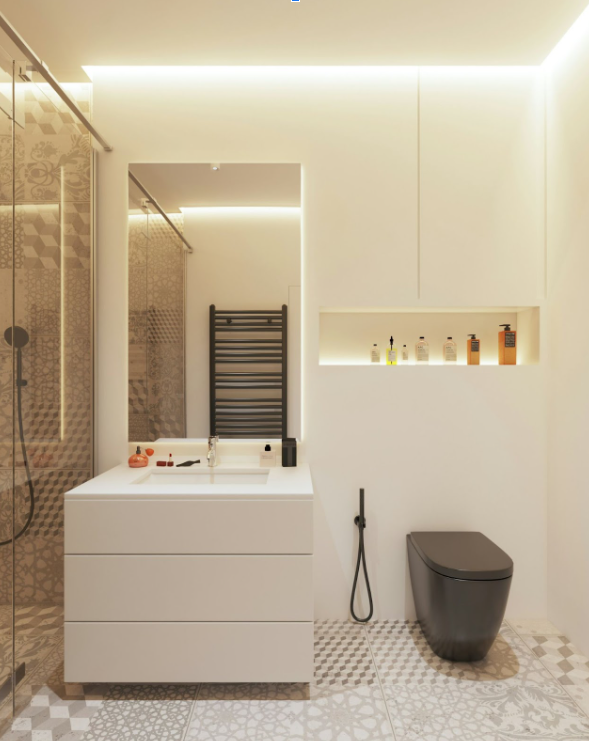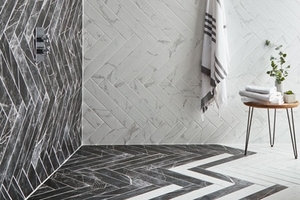How to Transform Your Bathroom for Ageing in Place Comfortably
Share
Copy Link

Making your home safer and more accessible is one of the most impactful steps you can take, whether you're welcoming an elderly parent into your home, future-proofing your space for yourself, or simply creating a more inclusive environment for guests. The bathroom, often one of the smaller and more hazardous rooms in the house, deserves extra attention.
Here’s your go-to guide on how to transform your bathroom for better safety and accessibility while maintaining style and functionality.
Why Consider an Accessible Bathroom?
Bathrooms are notorious for slips and falls. Wet floors, hard surfaces, and tight spaces can pose risks, especially for people with mobility issues. An accessible bathroom helps eliminate these hazards. By rethinking the design, you’ll create a space that’s safer, easier to use, and more enjoyable for everyone.
Here’s the good news: creating an accessible bathroom doesn’t mean you have to sacrifice style. With thoughtful planning, you can craft a space that’s both functional and beautifully designed.
Essential Features for an Accessible Bathroom
1. Walk-in Showers
Say goodbye to stepping over high-sided tubs. A walk in shower for elderly individuals with level-access or low-threshold entry is a game-changer for accessibility. They're easy to use for people of all ages, whether they’re elderly or experiencing limited mobility.
For added safety, install:
- Non-slip tiles or flooring.
- Built-in seating for more comfortable and secure showering.
- Accessible controls at a reachable height, so you don’t need to stretch or bend.
If you want to go all out, consider a wet room. These are fully waterproofed spaces without separate shower trays, creating a true walk-in experience.

2. Walk-in Baths
If soaking in a bath is non-negotiable, walk in baths for elderly individuals are your answer. These baths are designed with a door for easy access, so there’s no need to climb over the edge. Many models also include features like:
- Built-in seating.
- Grab rails for extra support.
- Quick drainage systems for less waiting time after your bath.
3. Grab Rails
Grab rails are a cost-effective and highly practical addition to any accessible bathroom. Place them strategically near:
- The shower or bath for extra stability.
- The toilet for help when sitting or standing.
- Doorways or walls for overall support.
To make them blend with your design, look for grab rails in sleek finishes, such as chrome or brushed steel, that complement your bathroom fixtures.
4. Wider Doorways
If someone in your home uses a wheelchair or walker, narrow doorways can be a major obstacle. Consider widening the bathroom door to at least 90cm for easier access. Pocket doors can be a fantastic option in tighter floorplans, eliminating the swing of a traditional door.
5. Accessible Toilets
Standard toilets can be too low and difficult to use for elderly individuals or those with limited mobility. A comfort height toilet (which is taller than standard) makes standing and sitting much easier.
For extra peace of mind, consider adding:
- A raised toilet seat.
- Grab rails on either side of the toilet for added stability.
6. Thoughtful Sink Design
Choose a sink with plenty of knee clearance underneath, so it can be used comfortably from a seated position. Wall-mounted sinks are an excellent option for this purpose.
Adding features such as lever-style taps or sensor-activated faucets can also make life much easier, as they don’t require a strong grip to operate.

Tips to Maintain Style and Functionality
Accessibility doesn’t mean compromising on design. Small details, like your choice of materials and finishes, can make a big difference. Here are a few ways to keep your bathroom both practical and elegant:
- Neutral Colours: Stick to a calming, neutral palette that appeals to all ages. Whites, beiges, and soft greys are timeless and create a spacious feel.
- Hidden Accessibility Features: Look for manufacturers that offer discreet yet durable accessible products. For example, grab rails that double as towel bars or foldable shower seats.
- Good Lighting: Bright, glare-free lighting ensures visibility. Add task lights around the mirror for grooming and overhead lights to illuminate the entire space.
Final Thoughts on Future-Proofing Your Bathroom
Your bathroom can be beautiful, accessible, and practical all at once. By implementing the ideas in this guide, you’re not just creating a safer space, but also a welcoming environment for all the people in your life.
Whether you’re upgrading for an elderly parent, future-proofing your home, or simply adding thoughtful improvements, these changes are well worth the investment.
If you’re planning a bathroom renovation, don’t forget to consult professionals who can recommend the best options for your space and budget. Accessibility starts with smart design!
Published: June 25, 2025



